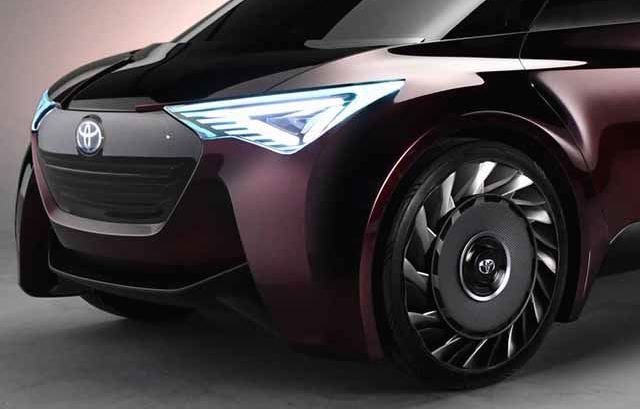Toyota May Soon Equip New Cars With Tires That Don’t Need Air

Like any technology of the future, the car of the future won't come to fruition overnight. Instead, it'll be the product of tireless work that yields one new innovative component at a time. Some of those components, like Toyota's experimental hydrogen-powered drivetrain, have the potential to revolutionize the way our species builds its motorized transportation devices. Others, like the airless wheel that Toyota is working on, will be the unsung hero components that make the more glamorous technology possible.
Reporting on the latter, Bloomberg took a deep dive into the tires on the Toyota Fine-Comfort Ride Concept car we saw debut during the 2017 Tokyo Motor Show. What's unique about the wheels is that they don't need to be pumped full of air like a typical tire does. This design isn't in the process of migrating from the drawing board to the production line just so that flat tires can become a headache of the past either. Instead, Toyota hopes to use the technology to reduce the weight of its hydrogen-powered cars so that they can become more practical to drive on a daily basis. Given that the Fine-Comfort Ride Concept utilizes an electric motor in each wheel, Toyota is keen to reduce weight in that area.
This isn't just a measure used to extract more efficiency out of the vehicle. If the motors are mounted inside of the wheel that would add unsprung mass, the type that kills good handling in any vehicle. Countering the added weight is a tire made using a band of rubber that surrounds a hub made of both plastic and aluminum. While the technology is still a ways away from being viable for production vehicles, the idea is that these tires would cut mass by about 30% over traditional air-filled tires, reducing weight by as much as 11 pounds per wheel. Airless tires aren't exactly something new. The technology is already used on golf carts and lawnmowers but has yet to be proven as a viable alternative for passenger cars.
One major hurdle to overcome is rolling resistance, the friction that acts against the tire while it's rolling forwards. Currently, the prototype tires create about 10%-20% more rolling resistance than their air-filled equivalents, which negates any weight advantages they provide. If Toyota can work out a way to reduce that figure so it's equal to a typical tire, then we can expect to see these new airless tires on most production cars given that they cost about the same as a regular tire.
Nouvelles connexes


